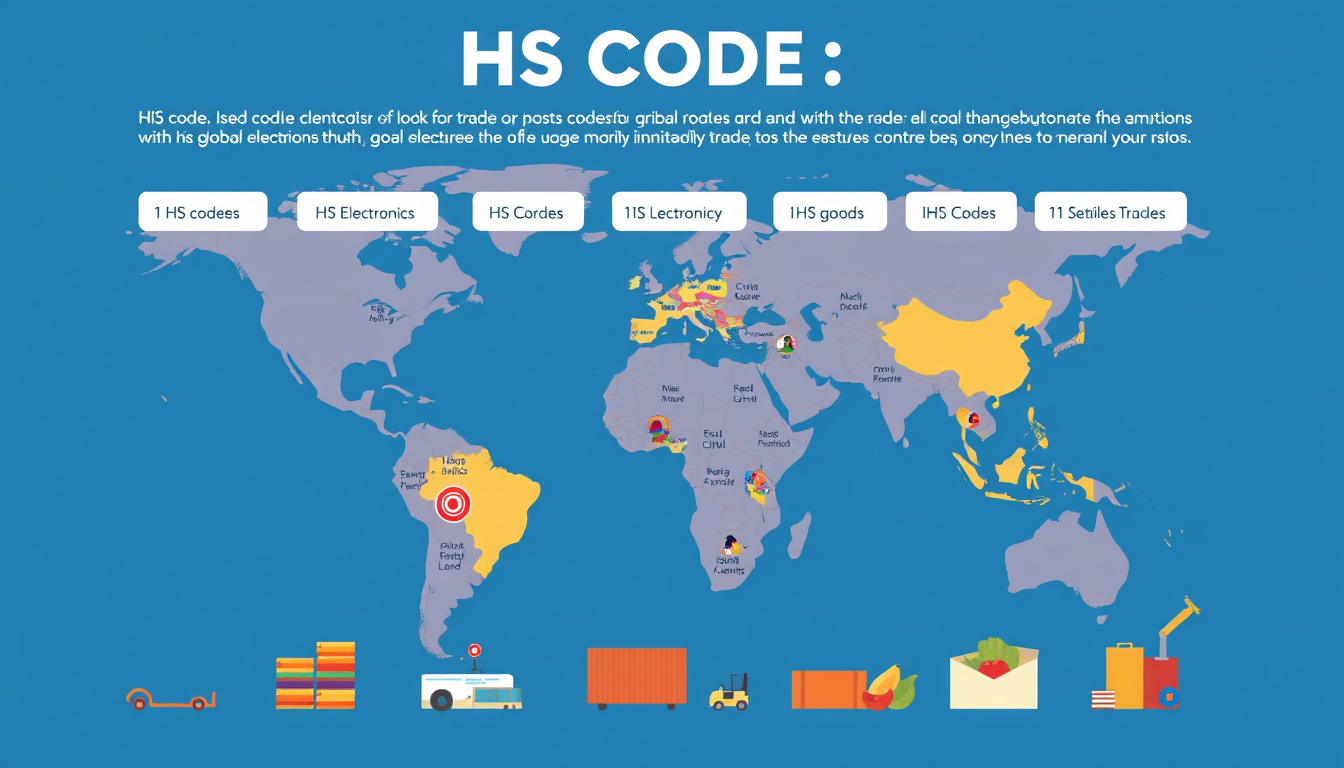In today’s interconnected economy, navigating international trade regulations efficiently is critical for businesses of every size. Central to this process is the use of Harmonized System (HS) codes—a globally standardized system to classify products exchanged across borders. Understanding how to perform an HS code lookup and apply the classification correctly can simplify customs procedures, improve shipment processing, and ensure compliance with international trade laws.
This essential guide explores what HS codes are, why they matter, how to accurately perform an HS code lookup, and the resources that can help streamline this task.
What Is an HS Code?
An HS code (Harmonized System code) is a six-digit internationally standardized numerical code used to classify traded goods. Developed and maintained by the World Customs Organization (WCO), the HS system provides a uniform framework for identifying products in import and export operations worldwide. This setup reduces confusion and misclassification by ensuring all participating countries speak the “same language” when it comes to product identification.
- The first six digits represent the global Harmonized System subheading.
- Individual countries may extend this to 8, 10, or more digits to accommodate further national-level classifications, tariffs, and regulations.
For example, the U.S. uses a 10-digit code system:
- The first 6 digits correspond to the HS code itself.
- The remaining digits (to make up 10) are national-specific, used by agencies like the U.S. Census Bureau (Schedule B for exports) or the U.S. International Trade Commission (HTS for imports).
Why HS Codes Matter in Global Trade
HS codes serve as a foundation for a wide range of international trade activities:
- Customs classification: Identifies what product is being shipped, controlling tariffs, duties, and taxes.
- Trade compliance: Helps businesses comply accurately with customs declarations, licenses, and trade agreements.
- Statistical analysis: Governments and organizations use HS codes to gather trade statistics essential for economic policy and market research.
- Preferential tariffs: Determines eligibility for reduced duty rates under free trade agreements.
- Facilitating logistics: Improves clarity and reduces errors in cross-border shipping documentation such as commercial invoices, certificates of origin, and shipping declarations.
Incorrect classification can result in fines, shipment delays, or even seizure of goods, so it is vital to get the HS code right.
How to Perform an HS Code Lookup

Step 1: Identify Your Product Description
Start with a clear, concise description of the product you want to classify—its material composition, use, and physical state.
Step 2: Use Official Lookup Tools
Several authoritative resources exist to look up HS codes quickly and accurately:
- U.S. Schedule B Search Tool: For U.S. exporters, the Schedule B database provides 10-digit codes incorporating the HS subheading. Available via the U.S. Census Bureau’s website.
- Customs Rulings Online Search System (CROSS): Offers legal precedents for import classifications that can guide exporters in finding correlating Schedule B numbers.
- Global Customs Info Databases: Many countries publish searchable tariff schedules online.
- Canada Post’s Find an HS Code Tool: Allows users to select destination countries and search by product description to find HS codes and related duties.
- International Trade Administration from Commerce.gov: Provides comprehensive educational resources on HS codes, including updates and compliance guidance.
Step 3: Use Classification Services for Complex Cases
For difficult or composite goods, it can be challenging to assign the correct HS code manually. Such goods may need classification under specific rules like the General Rules of Interpretation (GRI) of the Harmonized Tariff Schedule.
Step 4: Consider Professional or Automated Classification Tools
Modern solutions like Classifast.com offer instant HS code classification by analyzing your text product descriptions. Classifast quickly assigns accurate codes from international standards such as UNSPSC, NAICS, ISIC, ETIM, and HS with minimal manual effort—highly valuable for businesses handling diverse products or bulk classification needs.
Key Considerations with HS Codes
- Keep updated: The WCO typically revises the Harmonized System every five years. Businesses should stay informed of any changes.
- Know the differences in importing/exporting: While the first six digits remain constant globally, extended national codes vary by country, so verify the specific tariff schedule relevant for your jurisdiction.
- Special cases: Sets, mixtures, and composite goods require applying special classification rules. Textiles and apparel sets often have unique considerations.
Conclusion
Effectively using HS code lookup tools and understanding global classification standards unlocks seamless global trade. Whether you are a seasoned exporter or new to international markets, investing time in mastering HS codes helps avoid costly delays and penalties while optimizing tariff benefits and compliance.
For practical ease, tools like Classifast.com can accelerate and automate product classification, making it easier than ever to find the right HS code from any product description. Combining these resources with official databases ensures you always have the right classification on hand, simplifying your global trade processes.
Useful Resources
- U.S. Census Bureau Schedule B Search: https://www.census.gov/foreign-trade/schedules/b/index.html
- Customs Rulings Online Search System (CROSS): https://rulings.cbp.gov/
- Canada Post Find an HS Code: https://www.canadapost-postescanada.ca/
- Classifast.com: Instant classifier and category search for HS codes and other international classifications.
- World Customs Organization (WCO): https://www.wcoomd.org/
By effectively harnessing these tools, exporters and importers can confidently navigate the complex landscape of international trade classification and accelerate their business growth worldwide.
